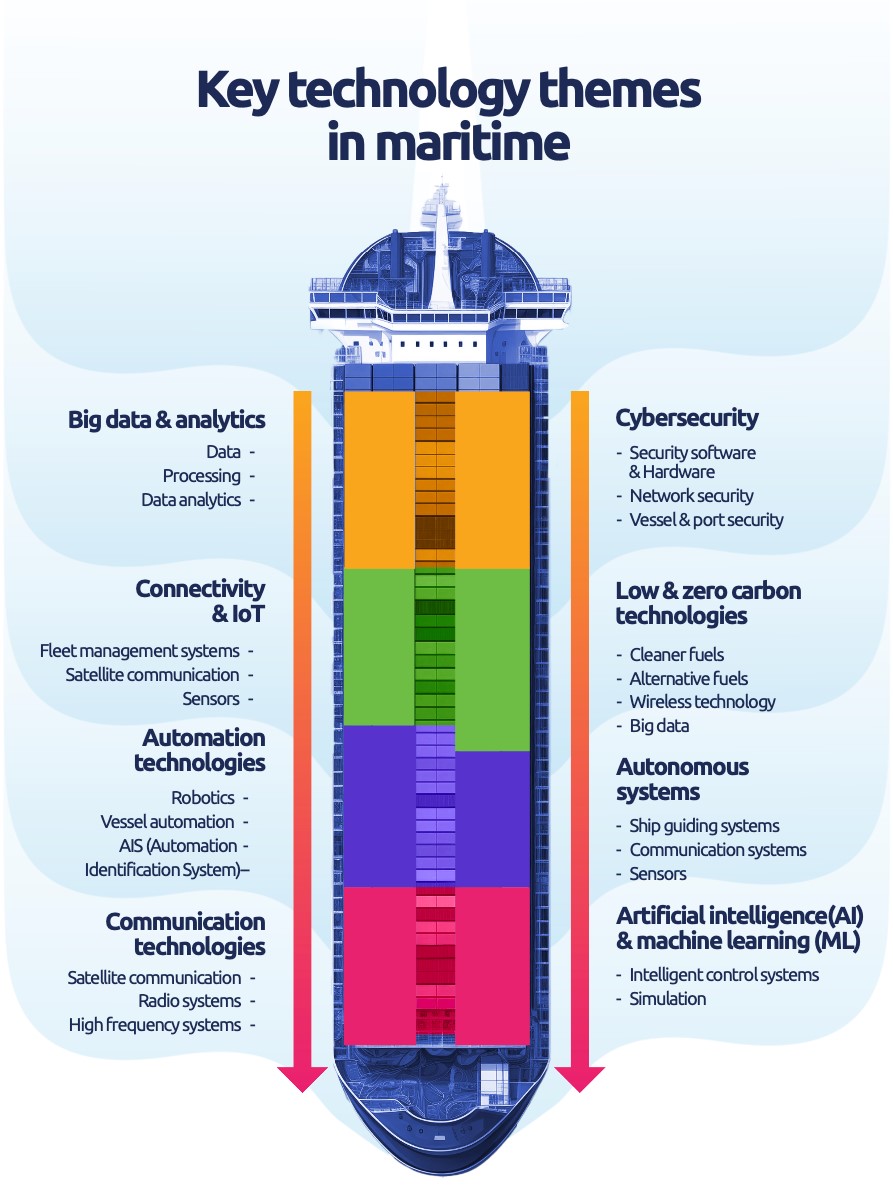Published: Oct 02, 2024
Everything AI in Maritime Industry
In an era where technological prowess defines the leading edge of industries, the maritime sector stands out, particularly in its embrace of Generative AI.
As detailed in our comprehensive white paper, the integration of advanced artificial intelligence technologies is reshaping the maritime landscape, promising unprecedented efficiencies and innovation.
Revolutionising maritime operations with Generative AI
Generative AI, or 'Everything AI, marks a significant evolution from traditional AI applications that were limited to specific tasks. This new breed of AI encompasses a broader spectrum of capabilities, capable of performing a wide range of tasks autonomously and learning from their outcomes. This shift from task-specific to versatile, cognitive, and predictive AI is transforming core maritime operations, including navigation, maintenance, and logistics management.

Enhancing safety and efficiency
The stakes are exceptionally high in maritime navigation. Generative AI contributes significantly by enhancing navigational safety, allowing for the prediction and circumvention of potential hazards far before they pose a threat. Moreover, AI's ability to optimise route planning in real-time based on weather conditions and obstructions plays a critical role in enhancing operational efficiency.
Optimising maintenance with predictive analytics
One of the standout applications of Generative AI in maritime is in predictive maintenance. By constantly analysing data from onboard sensors, AI can forecast potential equipment failures, enabling proactive maintenance schedules that prevent downtime and extend the lifespan of vital machinery.
Transforming logistics and supply chain management
Generative AI is also making significant strides in logistics and supply chain management within the maritime sector. By analysing vast arrays of operational data, AI algorithms can optimise cargo loading, suggest the most efficient shipping routes, and even adjust these plans in real-time to respond to emerging situations or delays, thus ensuring timely deliveries and reducing operational costs.
Future outlook and strategic recommendations
The potential for transformative change grows as the maritime industry continues to integrate more deeply with AI technologies. However, this also introduces new challenges, such as ensuring the compatibility of AI systems with existing infrastructural elements, addressing cybersecurity risks, and managing the workforce transition to more AI-centric roles. To navigate these challenges, maritime companies are encouraged to invest in robust training programmes, enhance their cybersecurity measures, and adopt phased approaches to AI integration.
Conclusion
The integration of Generative AI into maritime operations is setting a new standard for the industry, marked by enhanced safety, efficiency, and sustainability. As outlined in the ‘Dawn of Everything AI in maritime white paper’, while the path forward includes challenges, the strategic application of AI promises a revolutionary impact on the maritime sector, heralding a new era of digital transformation.